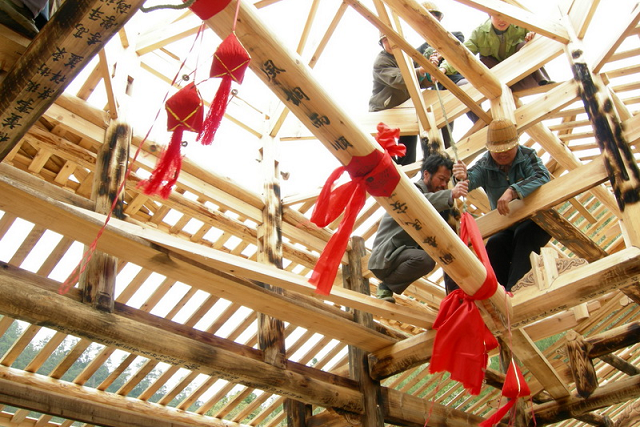·非遗百问·
72.莆仙戏的历史渊源及艺术特征是什么?
答:莆仙戏原名兴化戏,是中国现存最古老的戏曲剧种之一。南宋时期,在杂剧的影响下,福建莆田、仙游一带出现了将歌舞念白综合起来搬演故事的兴化杂剧。元明之际,吸收南戏诸声腔,形成以兴化腔为主体,融诸腔于一体的兴化戏,盛演于明代中叶。1952年,兴化戏正式改称莆仙戏。莆仙戏主要流行于福建莆田、仙游地区,在闽中、闽南的兴化方言地区也有流传。
在莆仙戏的表演体系中,有一些具有鲜明地方色彩的程式动作,如蹀步、牵步蛇、雀鸟跳、扫地裙、摸田螺、七下溜等,不少动作遗留着傀儡戏表演的痕迹。莆仙戏的唱腔结构属于曲牌体,有音乐曲牌 1000多支,锣鼓经 300多种。角色行当因袭宋元南戏体制,即生、旦、贴、靓妆、老、末、丑 7个角色。现存传统剧目 5000余个,传统手抄本 8000多本,其中源自宋元旧篇的 58种,被誉为“南戏遗响”。
截至目前,莆仙戏的国家级传承人有:黄宝珍、朱石凤(已故)、王少媛、谢宝燊(已故)、吴镇勋。
Q72. What is the historical origin of Puxianxi and its artistic characteristics?
Answer: Puxianxi (opera), originally called Xinghuaxi, is one of the existing operas with the longest history. In the Southern Song Dynasty, under the influence of Zaju (poetic drama set to music), Xinghua Zaju integrating dance, singing and narration emerged in Putian and Xianyou areas to perform stories. During the period of late Yuan Dynasty and early Ming Dynasty, Xinghua Zaju absorbed the elements from various tunes in Southern China, and it enjoyed prime time in the middle of the Ming Dynasty. In 1952, Xinghuaxi was formally renamed as Puxianxi, which is mainly performed in Putian and Xianyou areas with less popularity in the middle and south of Fujian where Xinghua dialect is spoken.
Within the performance system of Puxianxi, there are some routine actions with distinct local features, such as Diebu (beating time with feet), Qianbushe, Queniaotiao, Saodiqun, Motianluo and Qixialiu, and many movements maintain the hints of puppet show. The singing tune structure of Puxianxi falls into the category of Name of Tune Style (Qupaiti), which has over 1,000 tune names and over 300 methods of using musical instrument. The roles of performers follow the suit of operas in Southern China during Song and Yuan Dynasties, namely Sheng, Dan, Tie, Liangzhuang, Lao, Mo, and Chou. Currently, there are over 5,000 existing traditional opera programs, over 8,000 traditional handwritten opera copies (of which 58 find origins in the works created in Song and Yuan Dynasties), hence got the nickname “Legacy of Operas in Southern China”.
As of today, the national inheritors of Puxianxi are Huang Baozhen, Zhu Shifeng (deceased), Wang Shaoyuan, Xie Baoshen (deceased) and Wu Zhenxun.

木拱侨传统营造技艺(宁德市屏南县)
(图片来源于福建省艺术馆——省非遗中心官网)


